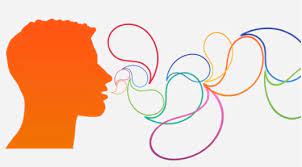Comparative Historical Linguistics is the diachronic study of languages based on comparison between two or more languages. Descriptive linguistics studies the characteristics of language systems or dialects at given points in their histories, while historical and comparative linguistics describes changes in language systems over periods of time and considers the familial and genealogical relationships of languages. Adopting a historical approach to the study of language, it traces the evolution of languages and, by comparing one with another, establishes relationships between them.

The historical linguist therefore, is paleontologist of language from a few surviving clues, and the extrapolation of the principles of historical. Linguistics, he attempts “to reconstruct languages that have now disappeared. He also divides languages into famines based on phonological and morphological resemblances the transformational generative approach to language change says that it is not languages that change, but rather grammars. Generative linguists have been slow to take up significant work in historical linguistics, and the literature of subject to date is rather limited.
Scope OF COMPARATIVE HISTORICAL LINGUISTICS
Comparative historical linguistics tries to prove that a language is derived from an earlier language, and that particular words in it are derived from particular earlier words. Another concern of the historical linguist is to understand how languages change. By a long series of historical processes the Proto-Indo-European parent language gradually split up into a number of separate languages such as Germanic, Celtic, Slavic and these in turn evolved into their numerous modern descendants. The same process of change are responsible from the diversity of dialects within Englishand after some millennia they may well have resulted in a number of languages descended from English in just the same way that English, German, etc., are descended from Proto- Germanic. The nature of these processes stands as the question basic to all further work in historical linguistics.
Linguists compare languages for several reasons, e.g. to note their dissimilarities; to form the classification of languages into different types; to find out what language have developed from what other languages. Three areas of comparative historical linguistics are of special interest, establishment of language families on the basis of comparison between languages or/and dialects. According to Millet, the science of comparative linguistics is interested in three things: ‘phonetic laws,’ analogy and loan words’ (i.e. words taken into a given language from another language).
The comparative linguistics is thus a rigorous method of finding and testing ‘a system of correspondences between an initial language and languages arising at a later period.’ Comparative linguistics may also lead to & explanation of how and why certain changes took place in a certain order, in turn creating certain languages.
Comparative Historical Linguistics embarks on an enthralling journey, revealing the interconnectedness of languages and unraveling the threads of their evolution. By delving into various linguistic aspects, such as sound changes, vocabulary, and grammar, this field of study allows us to trace the historical roots of languages and explore the ancient cultural landscapes in which they flourished. So, next time you engage in a conversation, remember that you are participating in a timeless tapestry woven by the countless generations that came before us.
Importance of Comparative Historical Linguistic
Comparative Historical Linguistic holds immense importance in the field of linguistics for several reasons:
Understanding Language Evolution
By tracing the historical development of languages, Comparative Historical Linguistic provides a comprehensive understanding of how languages have evolved over time. It uncovers the connections between seemingly unrelated languages, shedding light on the rich tapestry of human communication.
Cultural Insights
Language is deeply intertwined with culture, and studying Comparative Historical Linguistic allows us to delve into the cultural histories of ancient civilizations. The reconstructed proto-languages unearth cultural practices, beliefs, and interactions of societies long gone.
Reconstructing Unwritten Languages
Comparative Historical Linguistic plays a vital role in reconstructing unwritten languages or extinct languages for which no written records exist. By analyzing and comparing related languages’ structures and vocabulary, researchers can piece together the grammar and lexicon of these lost languages.
Language Typology
Comparative Historical Linguistic also contributes to language typology, the study of language structures and their universal features. By comparing different languages, linguists can identify patterns and commonalities, leading to a deeper understanding of the structures underlying human language.
Conclusion
Comparative Historical Linguistic is a valuable tool that allows us to explore the depths of language evolution and uncover the interconnectedness of human communication. Through the Comparative Method, the study of sound changes, and the analysis of language families, linguists can piece together the puzzle of our linguistic past. By understanding the historical development of languages, we gain both an enriched understanding of our cultural heritage and valuable insights into the human capacity for communication and expression.
